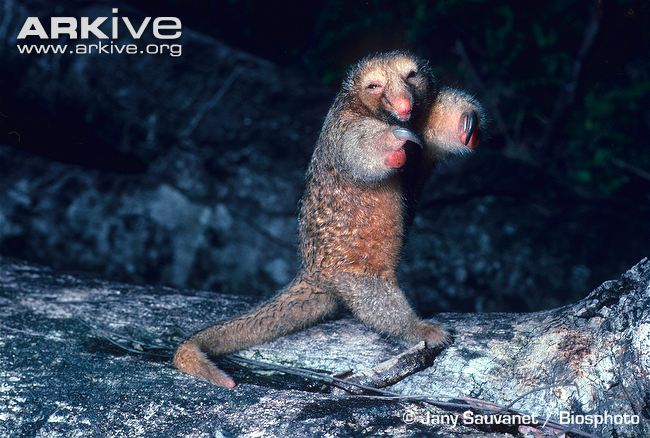The Name of the Game
Domain - Eukarya
Cyclopes didactylus is classified as this because their cells
have much more structure than those of bacterial cells or
archaeal cells and they are much more complex. The cells are
comprised of a cytoskeleton which gives the cell structure and
they are also composed of organelles inside of the cell like the
mitochondria (Tree of Life 2005).
Major Clade - Opisthokonta
Cyclopes didactylus is in the major clade of opisthokonta
because its cells once had posterior flagellum that it used to
move around with. Check out another member of the clade
Opisthokonta,
green heron!
Kingdom - Animalia
This kingdom of organisms include all animals that are
multicellular, develop from embryos, and ingest their food and
then digest it (School Work Helper 2014). Cyclopes
didactylus also has more rapid movement compared to plants and
some other organisms; this means they are motile (School Work
Helper 2014). Here's another member of the kingdom
Animalia,
frilled neck lizzard!

Phylum – Chordata
Cyclopes didactylus is classified in this phylum due to having a
notochord, which is a semi-flexible structure that helps
chordates without bones move (Buchsbaum et al 1987). Another feature
of chordates is the dorsal nerve cord, a structure that is
hollow and has nerves running through it where the anterior end
of it frequently formed into a brain (Buchsbaum et al 1987). One more
organism in the phylum Chordata is the
giraffe!
Class - Mammalia
Cyclopes didactylus is in this class because it has three middle
ear bones, hair and mammary glands (Schober 1999). The middle
ear bones are referred to as the hammer, anvil and stirrup and
their function is to transfer the sound waves from the ear drum
to the cochlea and then to the brain. According to the Animal
Diversity Web, hair is present at some point in all mammals
serving as insulation and aiding in the sense of touch (Schober
1999). The mammary gland produces milk and is a modified sweat
gland in females aiding in the nourishment of offspring (Schober
1999). The
Asian elephant is also in the class Mammalia too!
Order - Pilosa
Cyclopes didactylus is classified as pilosa because it has no
incisors or canines, has an expanded ischium, and the cheek
teeth lack enamel (University of Massachusetts Amherst 2012).
Figure 1. Phylogenetic tree of order pilosa. Image created by M.
Haas.
Family - Cyclopedidae
Cyclopes didactylus is classified in the family cyclopedidae
because it has 64 chromosomes, unlike members of the family
Myrmecophagidae who have 60 (Schober 1999) (Junior et al.
2004).
Genus - Cyclopes
Cyclopes didactylus is the only known organism in this
classification (Hayssen et al 2012).
Species - Cyclopes didactylus
Cyclopes didactylus is different from the other anteaters
because it “has a glenoid that is well separated from the porus
acousticus and a skull that is strongly tapered anteriorly in
lateral view” as stated by Virginia Hayssen (Hayssen et al
2012). Our
organisms name means “two-toed circle foot” according to the
Latin roots cycl-, pes-, di-, and dactyl- (Hayssen et al 2012).

Figure 2. Phylogeny of anteaters
Don't stop now! Go to
Habitat!
Home